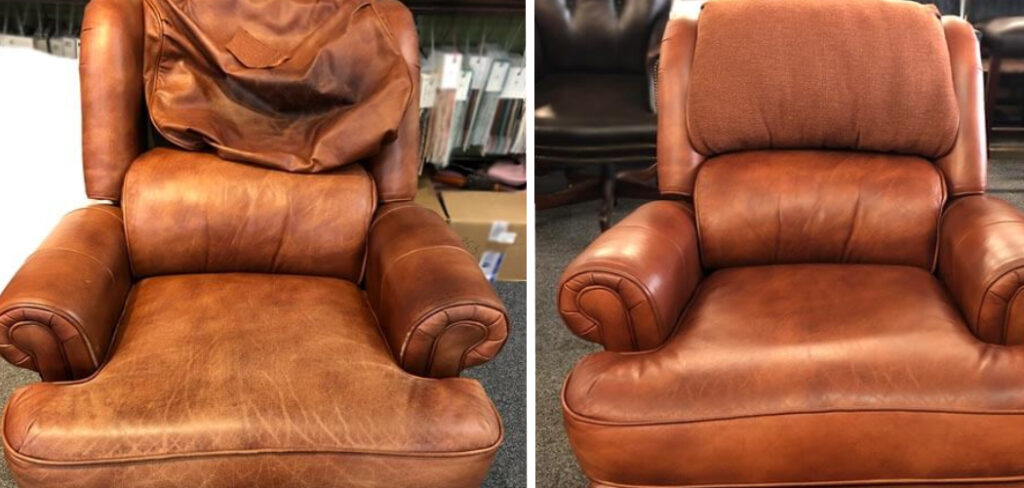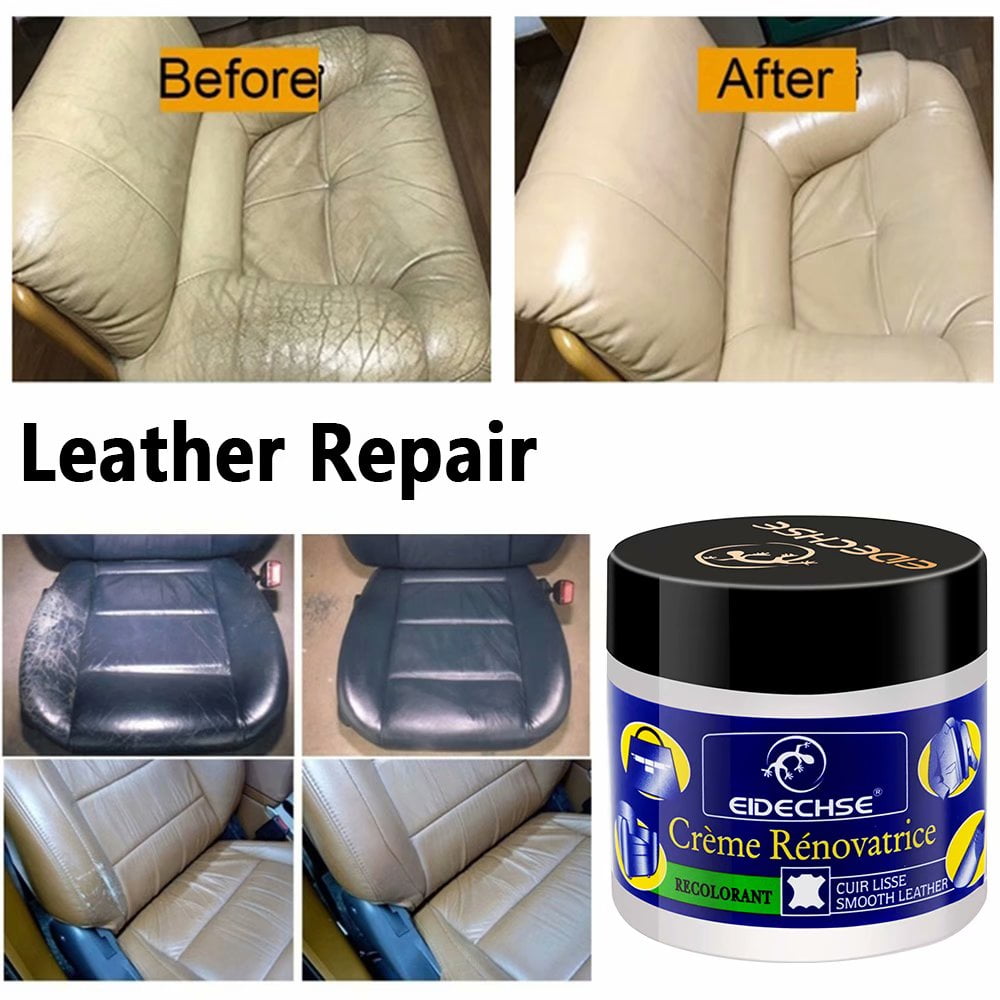Assessing the Damage

Before you embark on the journey of restoring your leather dining chair, it’s crucial to take a close look at the damage and understand its nature and severity. This assessment will guide your approach and help you choose the appropriate repair techniques.
Types of Damage
Identifying the specific type of damage is the first step in your assessment. Common types of damage to leather dining chairs include:
- Tears: These can range from small rips to large, gaping holes, and are often caused by accidental snags or sharp objects.
- Scratches: These are superficial marks on the leather surface, typically caused by friction or abrasion.
- Stains: These can be caused by spills, food, or other substances that have left marks on the leather.
- Fading: This is a gradual loss of color in the leather, often caused by prolonged exposure to sunlight or heat.
- Structural Issues: These include damage to the chair’s frame, legs, or upholstery, which can affect its stability and functionality.
Severity of Damage, How to recover a leather dining chair
Once you’ve identified the type of damage, you need to assess its severity. This will help you determine the complexity of the repair and the necessary materials.
- Minor: This refers to small tears, superficial scratches, or light stains that can be easily repaired with minimal effort.
- Moderate: This includes larger tears, deeper scratches, or stubborn stains that may require more advanced repair techniques.
- Severe: This category encompasses extensive tears, deep cuts, or structural damage that may require professional intervention or complete reupholstery.
Cause of Damage
Understanding the cause of the damage can provide valuable insights into how to prevent similar issues in the future.
- Accidental Spills: These are common causes of stains, especially on dining chairs.
- Wear and Tear: Over time, regular use can lead to scratches, tears, and fading of the leather.
- Pet Damage: Pets can cause scratches, tears, or even chew marks on leather furniture.
- Improper Cleaning: Using harsh chemicals or abrasive cleaning methods can damage the leather and cause fading.
Cleaning and Conditioning: How To Recover A Leather Dining Chair

Before you start stitching or replacing the leather, it’s crucial to clean and condition the leather chair to ensure a smooth and durable finish. This process removes dirt, grime, and any residue from previous treatments, preparing the leather for the next steps.
Cleaning the Leather
Cleaning the leather chair is the first step in restoring its beauty and longevity. This process removes dirt, grime, and any residue from previous treatments, preparing the leather for the next steps.
- Vacuum the Chair: Begin by vacuuming the entire chair, including the crevices and seams, to remove loose dirt and debris.
- Prepare a Cleaning Solution: Mix a mild soap solution using a gentle, pH-balanced soap designed specifically for leather. Avoid harsh chemicals or detergents that can damage the leather’s natural oils.
- Apply the Solution: Dampen a soft cloth with the cleaning solution and gently wipe the leather surface, working in small sections. Avoid soaking the leather, as excessive moisture can lead to damage.
- Rinse and Dry: Rinse the cleaning solution with a damp cloth and then dry the leather thoroughly with a clean, dry cloth. Allow the chair to air dry completely before proceeding to the conditioning step.
Conditioning the Leather
Leather, being a natural material, needs regular conditioning to maintain its moisture and flexibility. This process helps prevent cracking, drying, and fading, ensuring the leather remains supple and beautiful.
- Choose a Leather Conditioner: Select a high-quality leather conditioner that is specifically designed for the type of leather on your chair. Avoid conditioners containing silicone, as they can clog the pores of the leather.
- Apply the Conditioner: Apply a thin layer of conditioner to the leather using a soft cloth, working in circular motions. Avoid over-applying, as it can leave a greasy residue.
- Allow the Conditioner to Absorb: Let the conditioner sit for 15-20 minutes to allow it to penetrate the leather.
- Buff the Leather: After the conditioner has absorbed, buff the leather with a clean, dry cloth to remove any excess residue.
Preventing Future Damage
Regular maintenance and care are essential for preserving the beauty and longevity of your leather chair. By following these tips, you can minimize wear and tear and keep your chair looking its best for years to come.
- Avoid Direct Sunlight: Prolonged exposure to direct sunlight can cause fading and cracking. Place your chair in a shaded area or use a UV-resistant cover to protect it.
- Protect from Heat and Moisture: Keep your leather chair away from heat sources like radiators and fireplaces, and avoid exposing it to excessive moisture.
- Clean Regularly: Regularly dust and vacuum your chair to prevent dirt and grime from accumulating. Clean spills immediately with a damp cloth and mild soap.
- Condition Regularly: Condition your leather chair every 3-6 months to keep it moisturized and flexible.
- Avoid Harsh Chemicals: Do not use harsh chemicals or abrasive cleaners on your leather chair, as they can damage the surface.
Repairing and Restoring

Now that you’ve assessed the damage and cleaned and conditioned your leather dining chair, it’s time to tackle the repairs and restoration. This stage involves addressing tears, scratches, and stains, restoring faded leather, and fixing structural issues.
Repairing Tears and Scratches
Tears and scratches in leather can be effectively repaired using various methods, depending on the severity of the damage.
- Leather Filler: For minor tears and scratches, a leather filler can be used to smooth out the surface and create a seamless finish. Apply a thin layer of filler to the damaged area, let it dry completely, and then sand it down to blend with the surrounding leather.
- Patching: For larger tears, patching is a more robust solution. Cut a piece of leather that matches the color and texture of the chair’s original leather, and glue it over the tear using a strong adhesive specifically designed for leather. Ensure the patch is cut slightly larger than the tear to allow for overlap and a secure bond.
- Color Matching: Once the repair is complete, it’s crucial to match the color of the patch or filler to the surrounding leather. This can be achieved using leather dye or paint. Apply the dye or paint in thin layers, allowing each layer to dry completely before applying the next.
Restoring Faded Leather
Over time, leather can fade due to exposure to sunlight and other environmental factors. To restore faded leather, you can use leather dye or paint.
- Leather Dye: Leather dye penetrates the leather, providing a more permanent color change. Choose a dye that matches the original color of the chair as closely as possible. Apply the dye in thin layers, allowing each layer to dry completely before applying the next.
- Leather Paint: Leather paint provides a more opaque finish and is suitable for covering larger areas or significant color changes. Apply the paint in thin layers, allowing each layer to dry completely before applying the next.
Addressing Structural Issues
Structural issues, such as loose joints or broken legs, require a different approach involving woodworking tools and techniques.
- Loose Joints: Tighten loose joints by applying wood glue to the joint and clamping it firmly until the glue dries. If the joint is severely damaged, it may need to be reinforced with wood screws or dowels.
- Broken Legs: Repair broken legs by gluing the broken pieces together and clamping them firmly until the glue dries. If the break is severe, it may be necessary to use a wood dowel or a metal mending plate to reinforce the joint.
How to recover a leather dining chair – Recovering a leather dining chair can be a rewarding project, breathing new life into a cherished piece of furniture. If you’re looking for inspiration, consider the timeless elegance of a lowe leather dining chair , known for its durability and classic style.
Whether you choose to reupholster with a new leather hide or experiment with a different fabric, remember that the process is a testament to your creativity and dedication to preserving your furniture’s beauty.
Reviving a worn leather dining chair can be a rewarding project, breathing new life into a cherished piece of furniture. Remember, when selecting new upholstery, consider the dining table chair height cm to ensure proper posture and comfort. With a little patience and the right materials, you can transform your chair into a statement piece that will be enjoyed for years to come.
